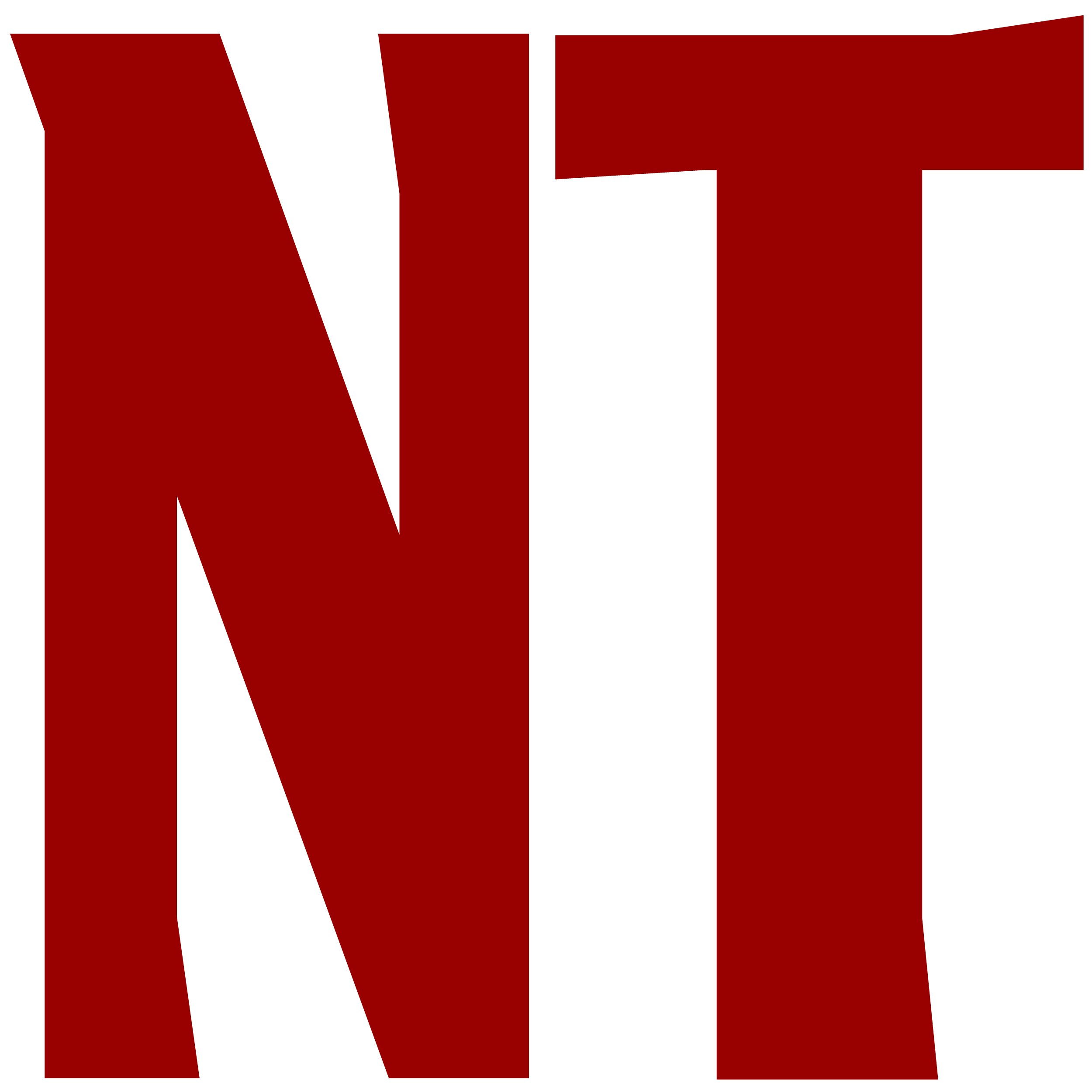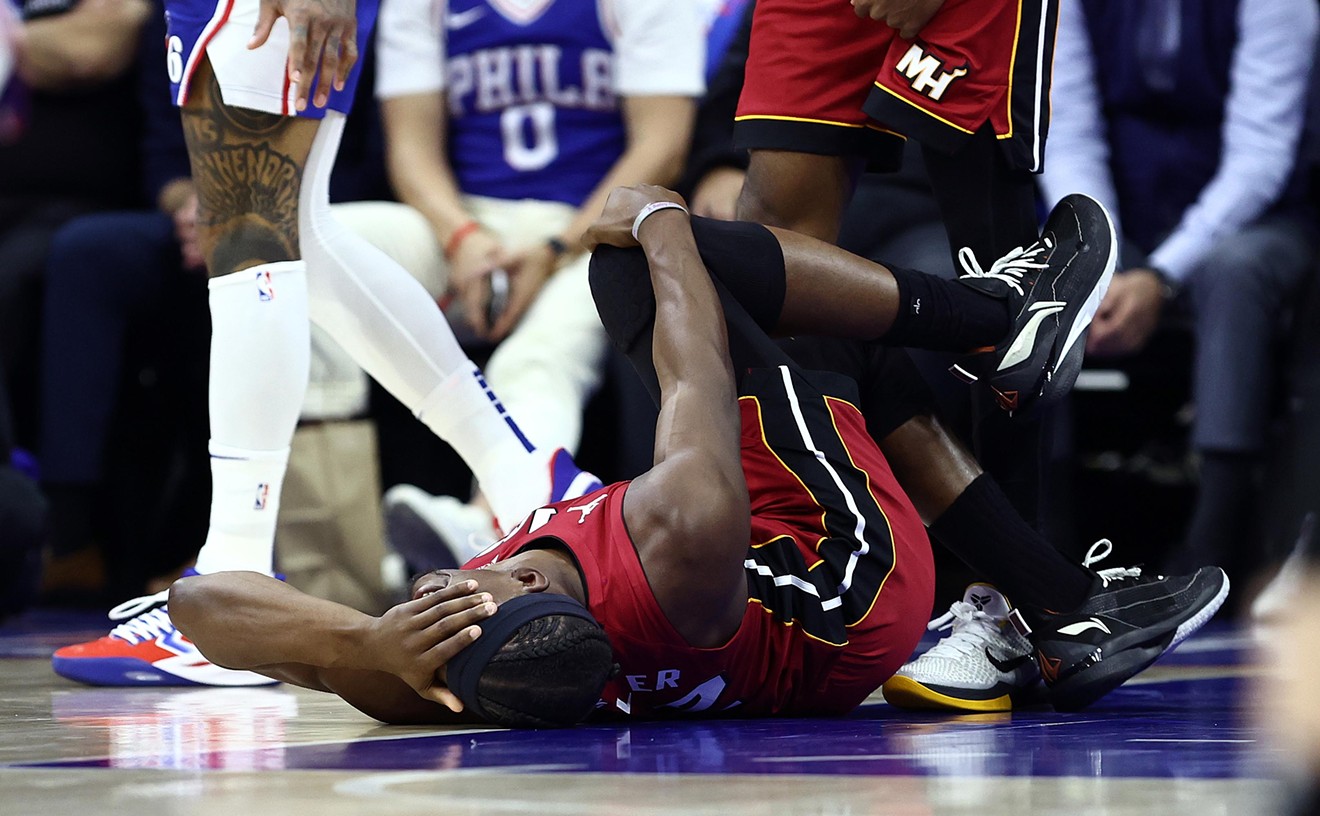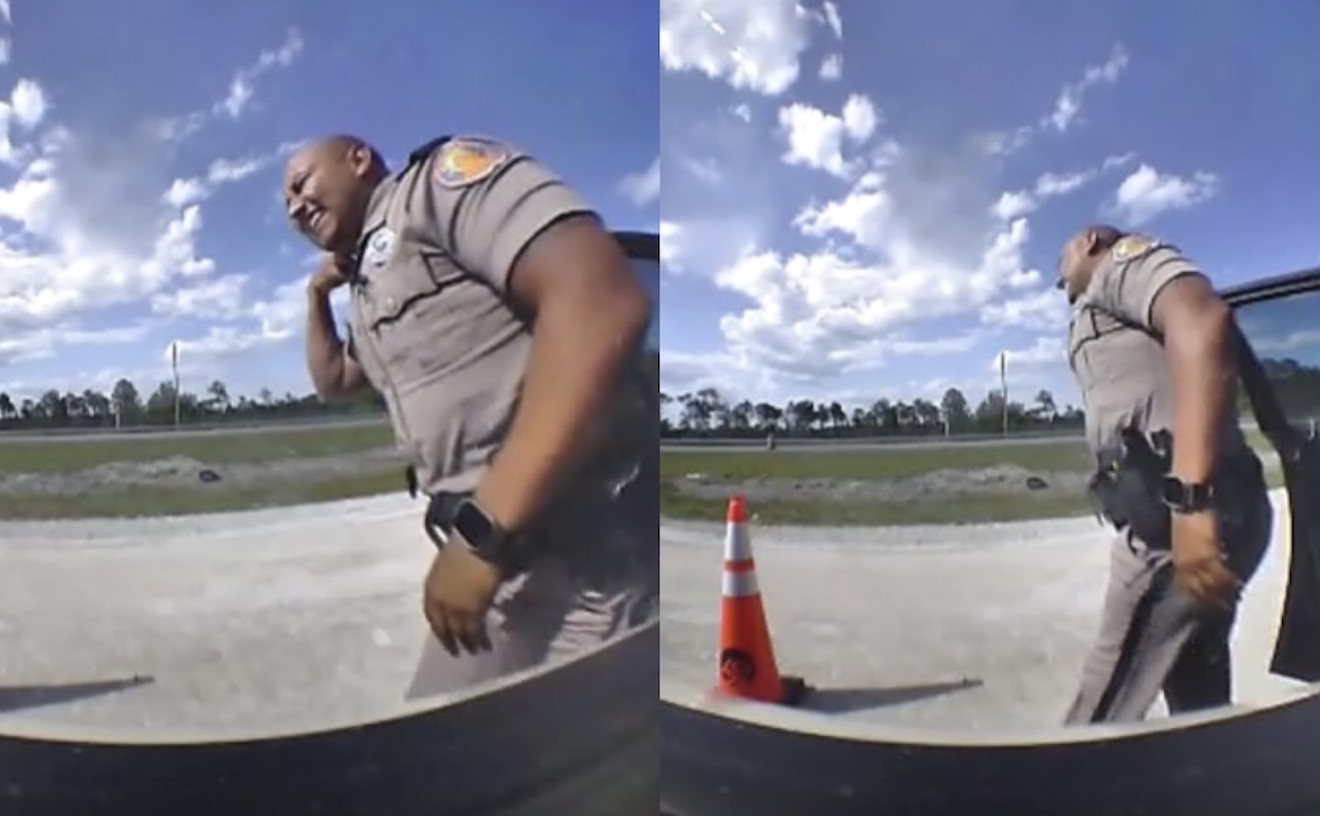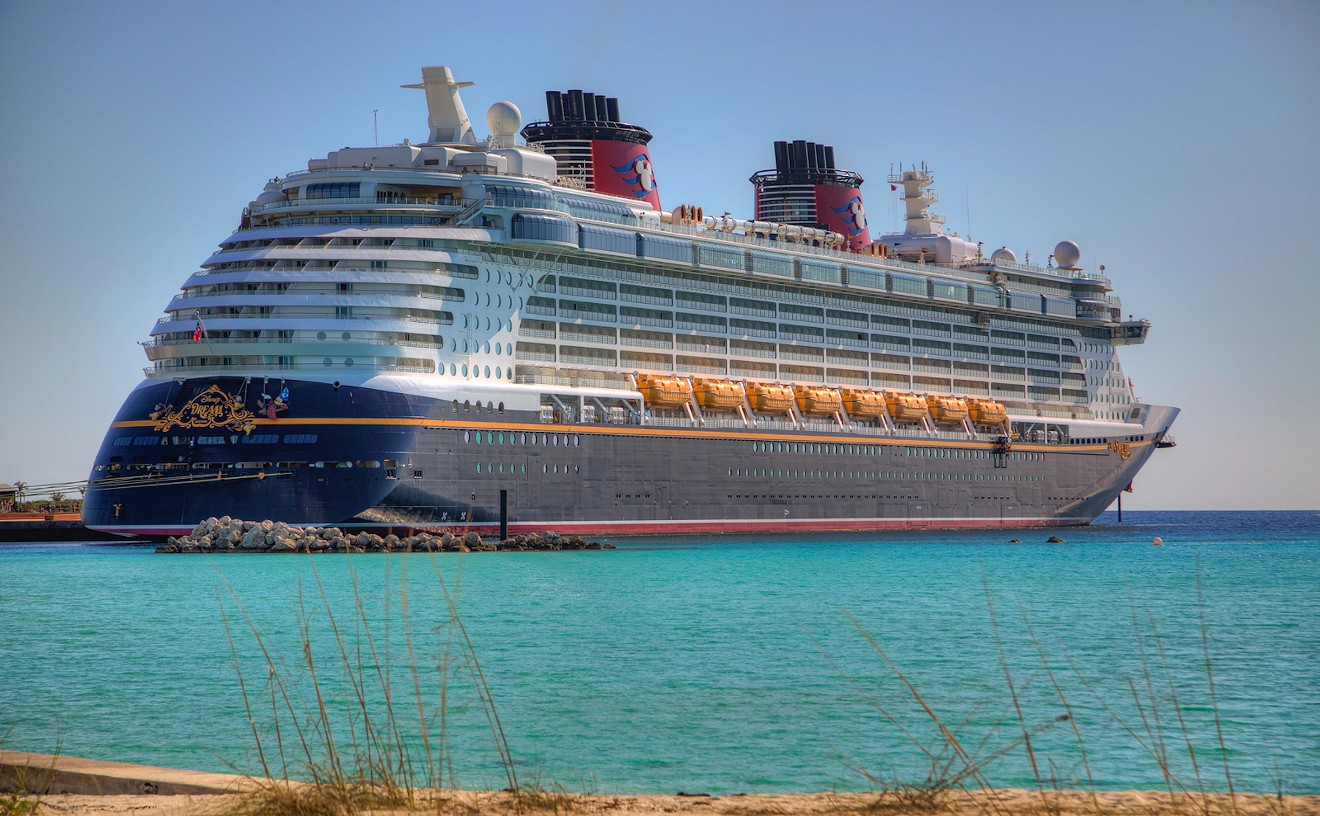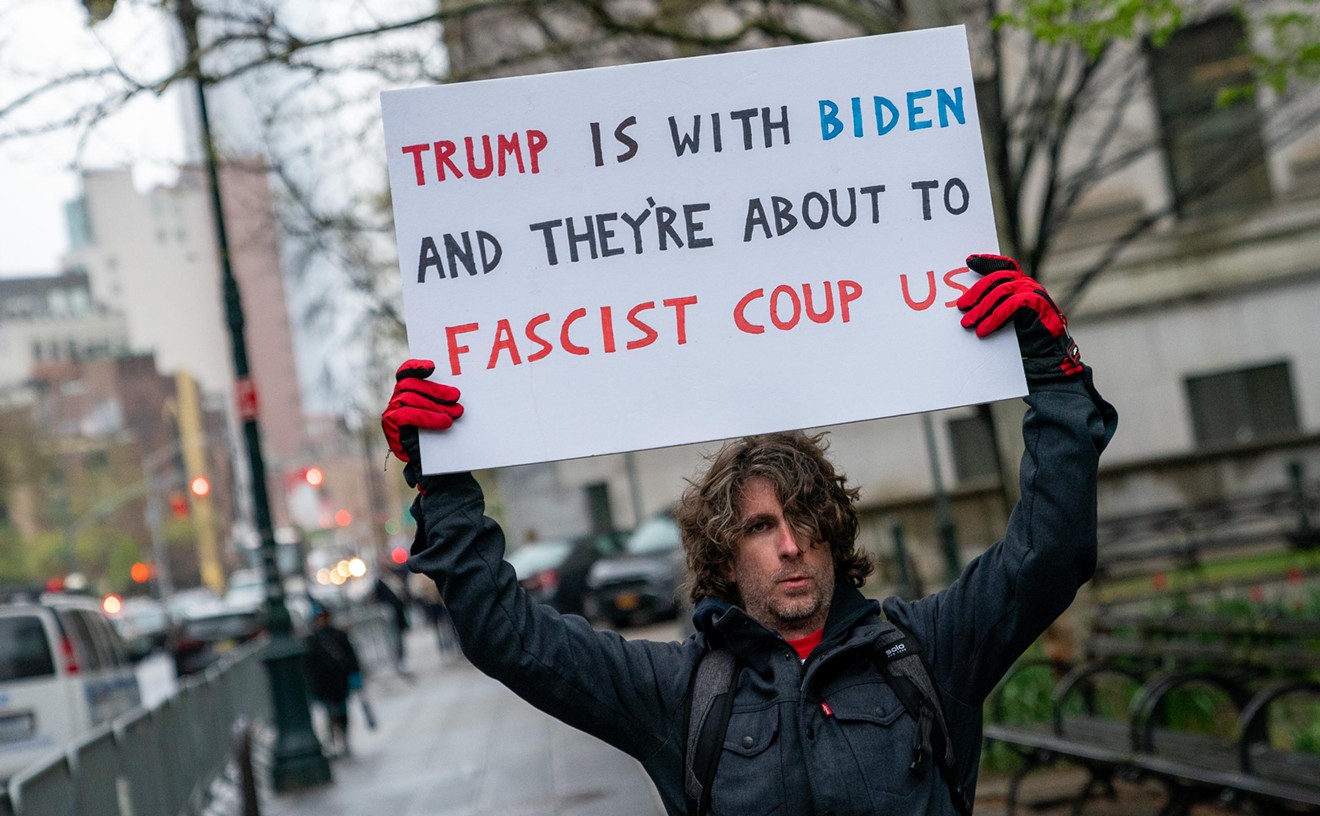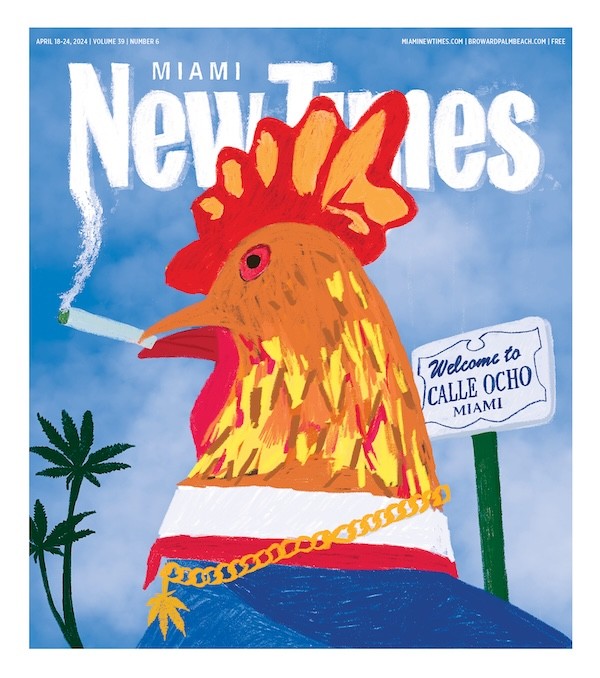And so coalition staffers were hoping for hundreds of concerned parents to arrive with their children in tow. The actual turnout on the evening of October 28, however, ends up being little more than a handful of moms and a dozen teenagers bused over from their drug-rehab center. The teens stand around looking bored, occasionally springing to life when a TV camera approaches. A DJ spins a set of bubbly breaks. Stacks of literature sit untouched next to a large boxful of Twizzlers licorice and Skittles cryptically marked RAVE CANDY.
Inside one tent, which features the federal Drug Enforcement Administration insignia on its flap, the Miami Coalition's director of communications, Bernie Diaz, remains unruffled by the sparse audience. Since the National Guard is used as part of the government's anti-drug strategy in schools, and as Guardmembers have finished the grunt work of setting up these tents, why not educate them?
As one guardsman listens intently, Diaz launches into performance mode, motioning to a table strewn with glossy rave-party flyers and what he terms “dangerous” rave paraphernalia: pacifiers, Charm's Blow Pops, and Vicks VapoRub. He's in the middle of vividly relating how Ecstasy-addled ravers are transfixed by the “glassy effects” of glow sticks when the guardsman interrupts, pointing to a glovelike ball-studded object on the table: “What's with the brass knuckles?”
“Ahh,” Diaz purrs with a knowing smile. “This is a massager,” he explains, rolling the suspect device back and forth on the soldier's arm. “It heightens the sensual effects of Ecstasy. Total strangers massage each other, which leads to sexual contact.” He pauses for effect and adds, “They'll do anything with anybody!”
Diaz moves on to a bottle of Robitussin, describing how thousands of kids are now chugging entire bottles of cough syrup when they're short the $25 needed for a hit of Ecstasy. “It has MDA in it,” he says -- falsely -- as a woman looks on with a horrified expression. He taps the bottle's label: “See, cherry flavor. It tastes like candy. They like that.”
And just where is Diaz getting this insider information on the hordes of Robitussin-swilling ravers? “Oh, we've done studies; there's lots of anecdotal evidence,” he answers confidently. “We've got an epidemiologist right outside you can talk to.” As Diaz's eyes begin burning with the light of a true believer, Kulchur carefully backs out of the tent and heads for the rave candy.
Scare tactics, uniformed soldiers, clueless social workers -- hasn't anything changed since the failed “Just Say No” drug-policy tactics of the Eighties? Actually times have changed, just not in Miami. That was the message at the Third Annual Harm Reduction Conference as 1100 physicians, health professionals, teachers, scientists, and community activists from around the nation gathered at downtown Miami's Wyndham Hotel from October 22 to October 25.
Their shared philosophy is a pragmatic rejection of what conference organizers term the “prohibitionist-abstentionist” model: We may not like the idea of teens (or even premarital couples) having sex, but instead of simply preaching abstention, we're also going to make condoms available. We may not approve of people shooting heroin, but rather than let the use of dirty needles continue to spread AIDS, we're going to set up clean-needle exchange programs.
Back in the Nancy Reagan days, such a conference would have been unthinkable. Prominent members of the medical and scientific establishment were too intimidated by the threat of losing grant money, or of being publicly stigmatized, to challenge the official orthodoxy of the drug war. No more.
The conference's four days featured freewheeling and open discussion of a number of responses to both drug abuse and the AIDS epidemic. Drawing special attention were the members present from Dancesafe, a self-described “nonprofit harm-reduction organization promoting health and safety within the rave and nightclub community,” whose headquarters are in Oakland, California.
One of Dancesafe's main activities has been the onsite testing of Ecstasy at raves around the nation. By using a chemical reagent, Dancesafe members can quickly determine if the pills in question truly contain MDMA (actual Ecstasy) or are fakes filled with potentially lethal (and more easily obtainable) adulterants such as DXM or PMA. Fake Ecstasy is rapidly spreading as dealers attempt to cash in on the real drug's popularity; indeed toxicology reports confirm that most of the fatalities attributed to Ecstasy overdoses were in fact the result of PMA (a legal stimulant that can cause seizures or cardiac arrest in high doses) or DXM (found in cough suppressants and a potential cause of heat stroke in high doses).
Regardless of what Dancesafe members discover from their testing, members of the group's thirteen nationwide chapters do not seize pills. They say doing so would discourage people from ever having the drugs tested. Their immediate goal is to prevent more PMA- or DXM-related deaths, not to pass judgment. A controversial approach? To some. But then that's the whole point of the Harm Reduction Conference: to air these matters and promote discussion.
One would think the conference's controversial nature would make it ripe for coverage in the Miami Herald. Or at least a mention. But despite repeated calls and faxes to the paper from conference organizers, and despite the fact that it was held literally next door to the Herald's offices, the newspaper did not write one word about the event.
Not that everyone at the Herald chose to ignore the Harm Reduction Conference. As the conference's second day began on October 23, that morning's Herald featured a dramatic half-page Miami Coalition advertisement on page five of the “Metro” section. A boldface headline took a not-so-subtle jab at Dancesafe, declaring, “To Dance Safe Dance Drug-Free.” The ad went on to specifically attack the conference: “Miami reminds those who claim to reduce harm while promoting drug use that they send complex, confusing, and erroneous message [sic].” Beneath an ominous "Welcome to Miami, we'll be watching out for you" was an anti-rave jeremiad that warned, “Our children are being lured into a dangerous and deceptive late-night culture of “techno' music and laser lights at “Raves....' Attending or supporting these activities is like playing Russian roulette.” It was signed by figures such as Miami-Dade Mayor Alex Penelas, Miami Beach Police Chief Richard Barreto, Florida Office of Drug Control director James McDonough, Barry University president Sister Jeanne O'Laughlin, and University of Miami president Edward T. Foote II. (A number of individuals from UM's department of psychiatry and behavioral sciences, as well as its school of medicine, chose to attend the conference as featured speakers.)
The advertisement ended with a plug for the Miami Coalition's upcoming “mock rave” on October 28. And there at the bottom was the Miami Herald-El Nuevo Herald logo, an acknowledgement, says Bernie Diaz, of the Herald's cosponsorship of the event and its decision to partially donate the ad space.
Just as eyebrow-raising, on October 29 the Herald would find room to cover this “mock rave,” citing Diaz's dubious assertions on Ecstasy without comment while conveniently omitting any mention of the paper's cosponsorship of the event or parent company Knight Ridder's ongoing funding of the Miami Coalition.
The article's author, Eunice Ponce, and her editor apparently don't read their own newspaper. Both told Kulchur they were unaware of the Miami Coalition ad and the Herald's cosponsorship of the “mock rave,” as well as the Harm Reduction Conference's very existence. Herald health writer Christine Morris says she did speak with a conference organizer but chose not to write about it. “There was a lot going on [that week]; there are a lot of conferences,” she reports. “It's a question of my time.”
It remains unclear, then, if the Herald's use as a propaganda tool for Miami's drug warriors is deliberate or borne of editorial ignorance. Either answer is disturbing.
“It's important to address the political ramifications of this hysteria,” 22-year-old Dancesafe community organizer Theo Rosenfeld told the crowd sitting around him at a conference workshop. Holding the Miami Coalition's Herald ad aloft, he continued, “On a subtle level, condemning media such as this shuts down communication. The more the media demonizes us, the less we're going to be able to save lives.” Not that he's feeling deterred in the slightest. As soon as the conference ended, he was off to the Midwest to help set up a new Dancesafe chapter.


